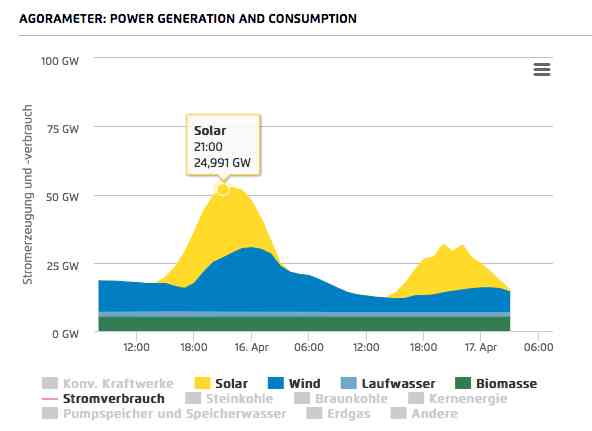Germany has set a new record for solar output this week, with output breaking above 25,000MW for the first time on Wednesday.
According to the web-site Montero, Germany’s solar power units produced 25,029MW of power between 13:00 and 13:15 CET on Wednesday. The previous output record was reached on June 9 last year at 24,244 MW.
This graph below shows data captured by Agora Energiewende. (The times are Australian, which is where we are based, so subtract 8 hours to get to 1pm. This data does not break down 15 minute intervals).
The solar generation actually beat grid forecasts of 24,243MW for the period. Wind also peaked at close to 24,000MW an hour later. From before 11pm to after 3pm, solar and wind and biomass combined to provide more than half of the country’s energy demand.
This helped send wholesale electricity tariffs into negative territory, with intraday prices falling to minus 14.91/MWh for several 15-minute-blocks during midday peak periods.
Wind also peaked at close to 24,000MW an hour later. From before 11pm to after 3pm, solar and wind and biomass combined to provide more than half of the country’s energy demand.
The new solar record in Germany comes just a week after France set a new record for solar output, when it produced a maximum 4,049MW, and on the following Sunday accounted for nearly 10 per cent of demand.
Mark Lewis, from Kepler Chevreux, who brought attention to the new record, noted: “The disruptive impact of renewable energy has already had a big impact on the utility sector in the EU, and will in our view pose an increasing challenge to incumbent utilities in other parts of the world over the next five years.”









